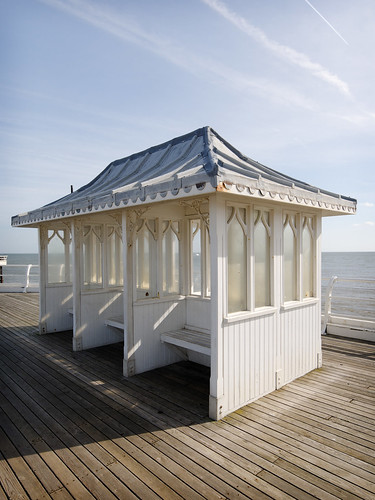 Alex3 by FreddieBrown
Alex3 by FreddieBrownAnd so, unexpectedly swiftly, I find I am to present myself at Addenbrooke's at 07:00 this Saturday to be admitted for an open partial nephtectomy (following the recent diagnosis of suspected kidney cancer).
Laparoscopic vs open surgery
I have avoided hospital all my life so far, so the sudden prospect of major surgery is a little daunting. I discussed various surgical options with my consultant – I was attracted by the idea of laparoscopic surgery, but perhaps only because my inner geek was interested in having a robot involved in the procedure (the hospital has a da Vinci Surgical System). The chief advantage of the laparoscopic approach is that it is less invasive and therefore tends to have a shorter recovery time – and exhibiting perhaps a dry sense of humour the consultant observed I was probably “keen to get back to the gym”.
However, in my sort of case the Cambridge team tends to favour open surgery. This is in part because they can dump ice into my body cavity during the operation, so that the (cooled) kidney remainder dies a little less as a result of the necessary ischemia, but also because of the “endophytic cyst” that has been found in the centre of the kidney. Ah yes, that cyst. The doctors seems sure this is nothing to worry about, since many people develop simple (fluid-filled) renal cysts at some time. However just to be sure the surgical team will perform an ultrasound scan on my exposed kidney to confirm whether this cyst really is as simple as it appears, and if not – cut it out. Given that I am learning that doctors are practised in the art of gradual disclosure, I feel a little nervous about this.
Radical vs partial
There was also the question of whether to have the whole kidney removed (radical nephrectomy), or just the diseased part. The thinking here is that for smaller tumours (such as mine) it is better to preserve some kidney, and so some kidney function, where possible. This is not so much based on direct clinical evidence – since one kidney always takes-over so over effectively when the other is removed this would be hard to measure – but on logic: if something else goes wrong with the remaining kidney later, it is surely better to have preserved whatever one can.
Retail therapy
Faced with various discomforts ahead, I decided I needed to treat myself to some compensatory camera equipment, and plumped for a second-hand Nikon D700. This is a camera that Nikon is about to discontinue, but has many points in its favour:
- It’s now been around long enough (since 2008) that second-hand ones are available at reasonable prices.
- It’s a “full-frame” camera, with all the attendant benefits that brings – particularly in ultra-wide lens choice, which intereste me.
- Unlike some Nikon models this has happy colours.
- It’s so well-established that supporting software (such as my favourite RAW converter, DxO Optics Pro) is thoroughly de-snagged.
I’ll post some more thoughts on this camera when I’ve had a chance to use it more, but in the meantime … Merry Xmas!
 Classic Nikon D300 territory: soft light, cool palette
Classic Nikon D300 territory: soft light, cool palette
On a recent trip to Norfolk, I forgot to take a camera battery charger and so after my trusty Nikon D300 ran down I was forced to resort to my vintage (well, 2005) Nikon D50 as backup.
Now, I’ve had the D300 for over a year and still feel I’m coming to terms with it. It’s somehow a serious camera and it turns out serious‑looking images; in particular, when it comes to colour it’s at its best with cooler, softer, almost pastel‑like scenes – which it renders with a painterly subtlety. When it comes to attempting warmth, it seems to me to to veer off course and crash into a citrus palette. As I've written before, it’s possible to do something about this. Yet somehow the original character of the sensor seems to come through.
The D50, in contrast, seems to produce punchier, vidid (and not‑so‑serious images). What you see below is straight out of the camera converted from RAW to JPEG using DxO Optics Pro and DxO user Andy_F’s default settings (check out the forums to find Andy’s excellent work on better colour accuracy from RAW conversions). And so if I’m not imagining all this, in some ways (whisper it) I might even prefer the look I can get from the earlier camera …
 Bam! The Nikon D50 delivering obvious, saturated colours
Bam! The Nikon D50 delivering obvious, saturated colours
I have been using a Nikon D300 now for six months, and one of the characteristics I have had to get to grips with is its default colour handling: out of the camera the colours can be a touch “zingy” to my eyes – in an effort to replicate the classic Fuji Velvia look, the colours processing gives very rich yellows, but this has the side effect of making reds somewhat orangey.
Here is a picture of some rose hips:
In real life to my eye it seemed that the central rose hip had no orangeyness to its red; the upper rose hip had just a touch of orange. But, out-of-the camera, the colour rendition here differs from what I saw: the tints are much more orange.
One solution to this lies in the dark art of RAW conversion. Many photographers roll their eyes at this business – it can require a lot of time farting around with post processing software rather than taking more photos. However, I quite like farting around with software, so am quite happy to experiment.
For RAW conversion I use the fabulous DxO Optics Pro package. This offers a host of options for converting the RAW image into a JPEG, and it has to be said that some of these (such as chromatic aberration fixing) are now finding their ways into camera bodies. However, this software still offers quite a bit more flexibility and, in particular, will fix lens distortion for certain camera/lens bodies which have been analysed.
Another useful feature is the ability to control colour rendering. Want to give your Nikon D300 pictures the look of a Canon 40D? No problem – just specify it.
For Nikon users, a DxO user by the name of Andy_F has developed some RAW conversion presets specifically targeted at correcting the colour conversion of recent Nikon bodies. The result of using one of these to process the original RAW file give this result:
Which is much closer to what I think I saw.
Even better though is Andy_F’s “landscape” preset, which attempts some detail recovery from the image:
Really enjoying the capabilities of the AF-S DX NIKKOR 35mm f/1.8G. Thoroughly recommended for all Nikon DX shooters.